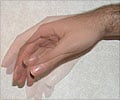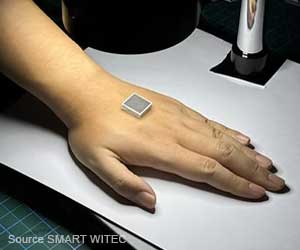The use of nitinol, an alloy of nickel and titanium, in prosthetic hands helps achieve faster and smoother finger movements that are similar to human muscles.

The nickel-titanium allows coronary stents to pop open once delivered through a very narrow catheter. The prosthesis has bundles of Nitinol wires, running through its interior each about the width of human hair.
The wires have a predefined shape that they like to be in, but when electricity is run through them, the wires loosen and the arm moves. Stopping the flow of current returns the metal wires to their original position. There are no motors, pulleys, or many other mechanical components found in existing prostheses.
The nerve bundle can rapidly contract and relax while exerting a high tensile force and lets the designers create new designs.
“The reason for this behaviour is the rapid cooling that is possible because lots of individual wires present a greater surface area through which heat can be dissipated. Unlike a single thick wire, a bundle of very fine wires can undergo rapid contractions and extensions equivalent to those observed in human muscles. As a result, we are able to achieve fast and smooth finger movements,” explains Filomena Simone, an engineer who is working on the prototype of the artificial hand.
Source-Medindia
 MEDINDIA
MEDINDIA




 Email
Email




